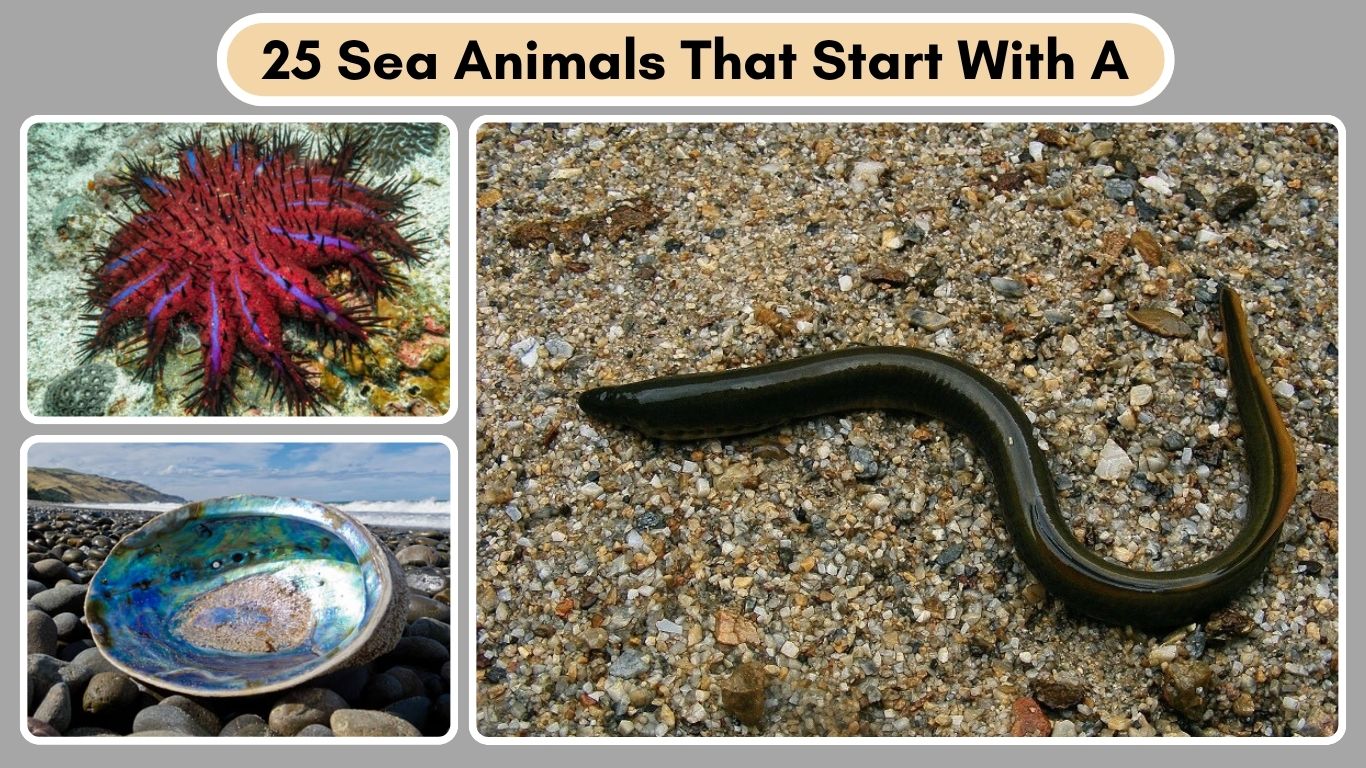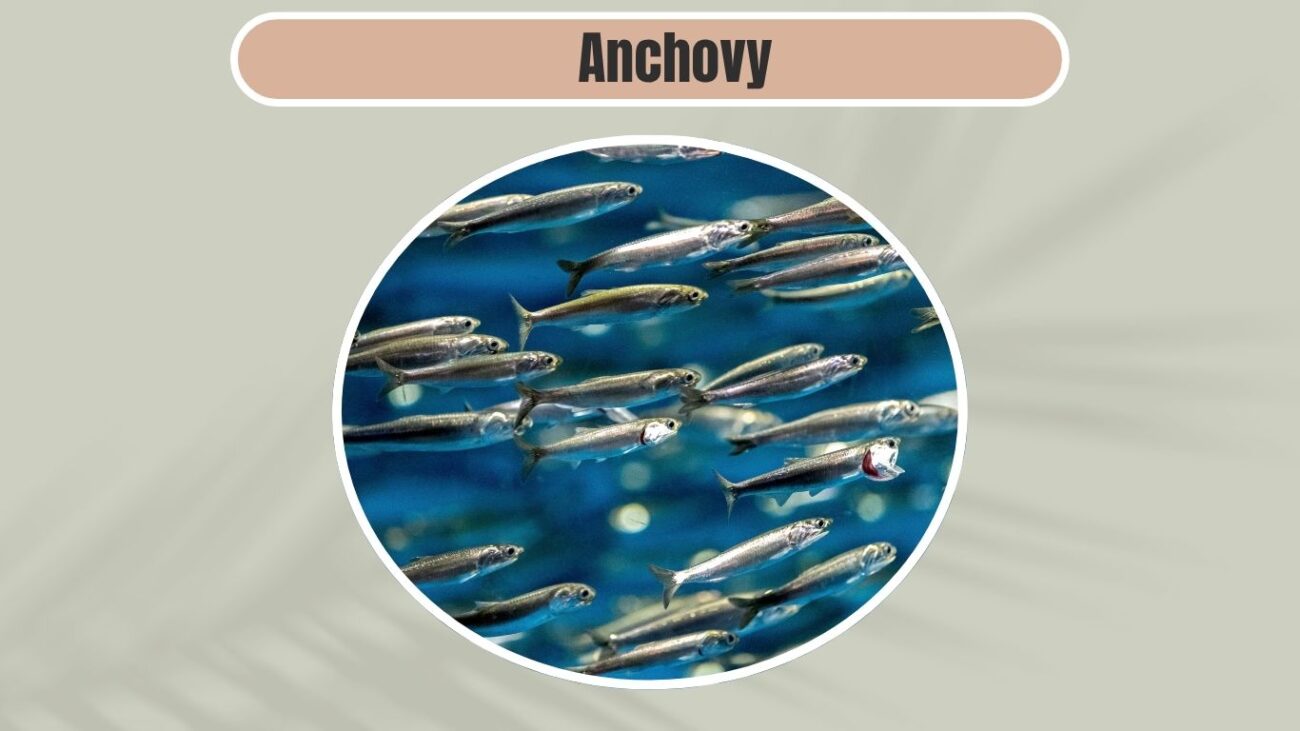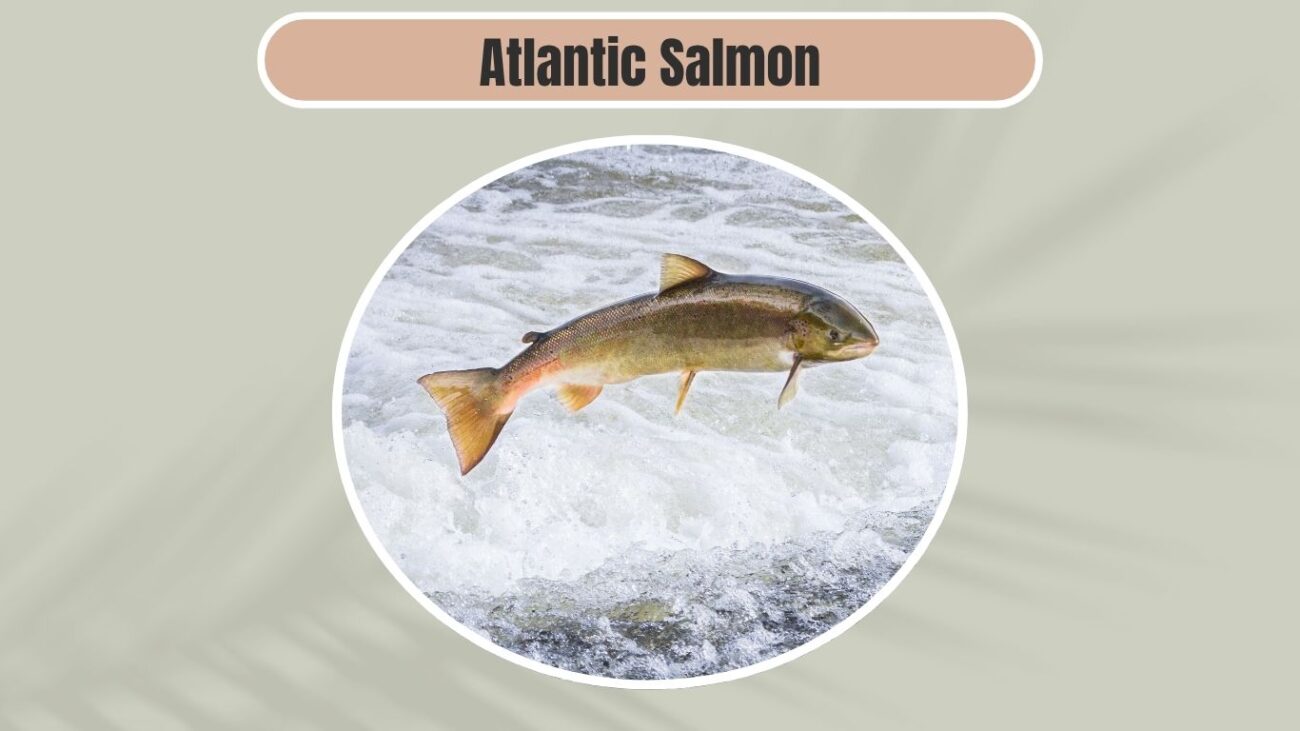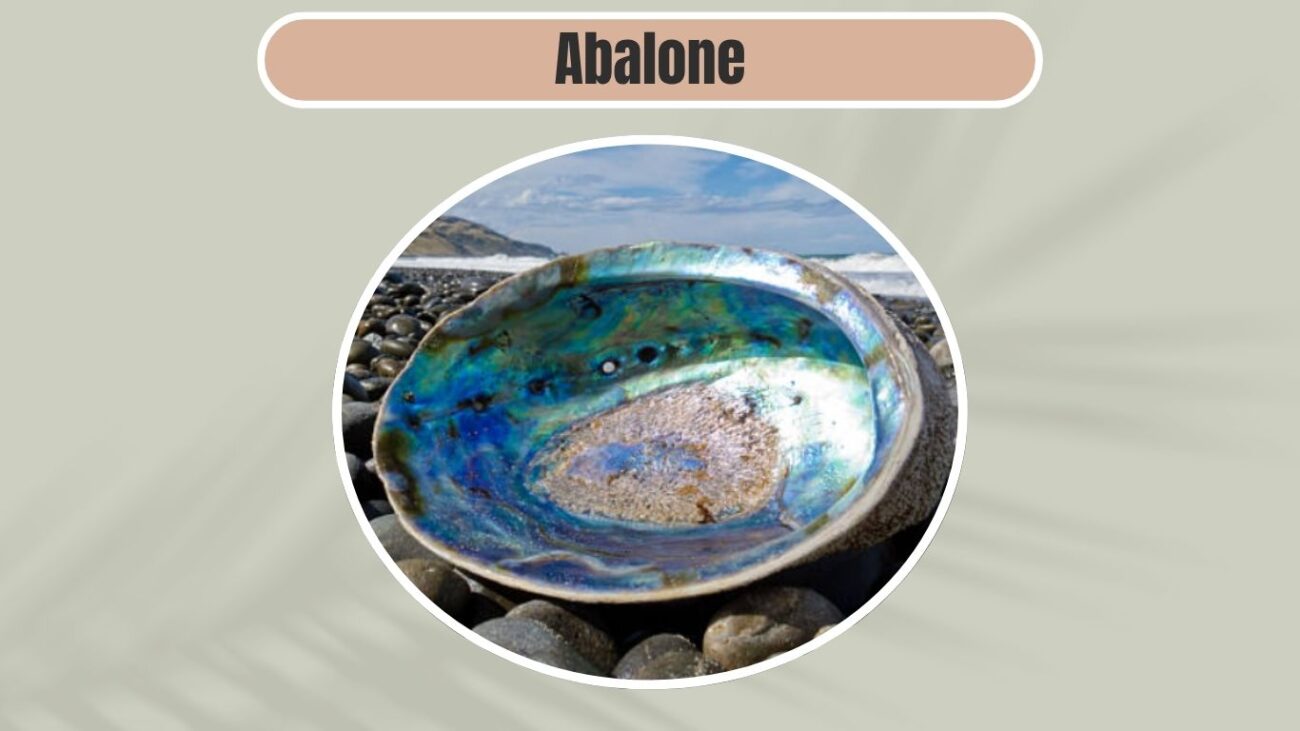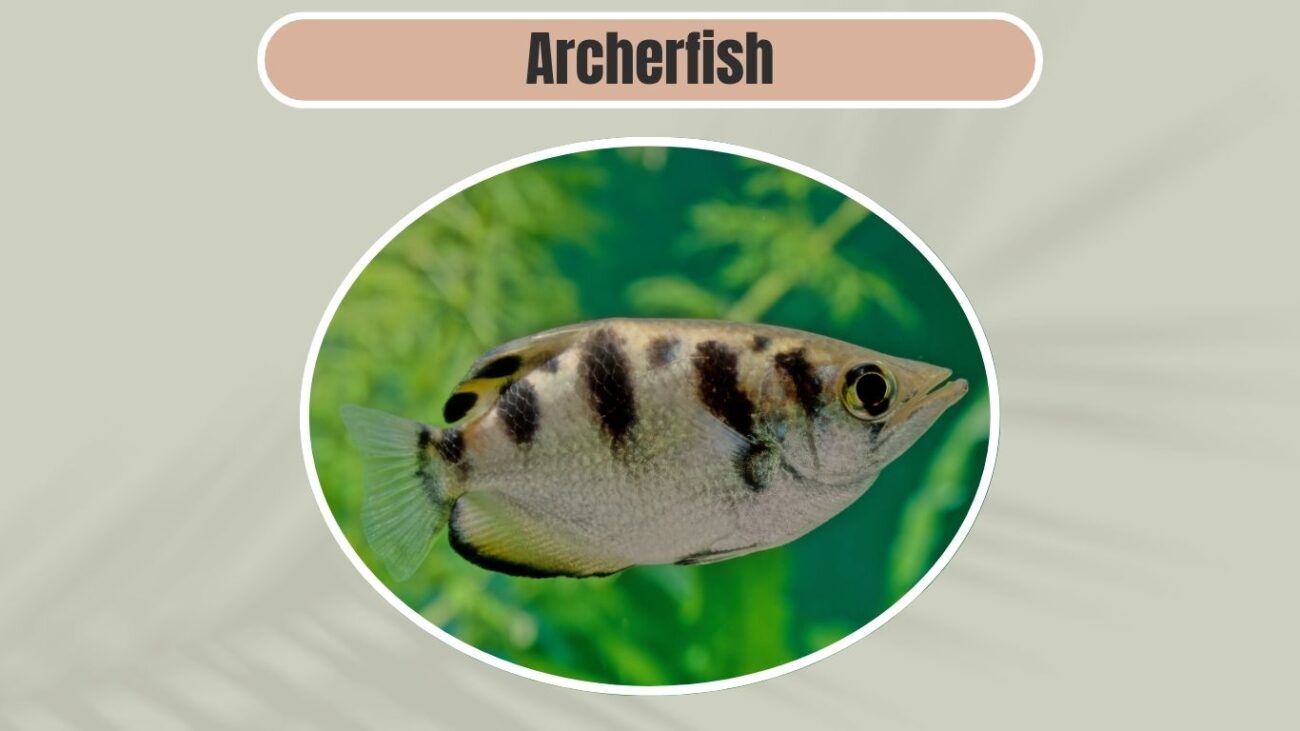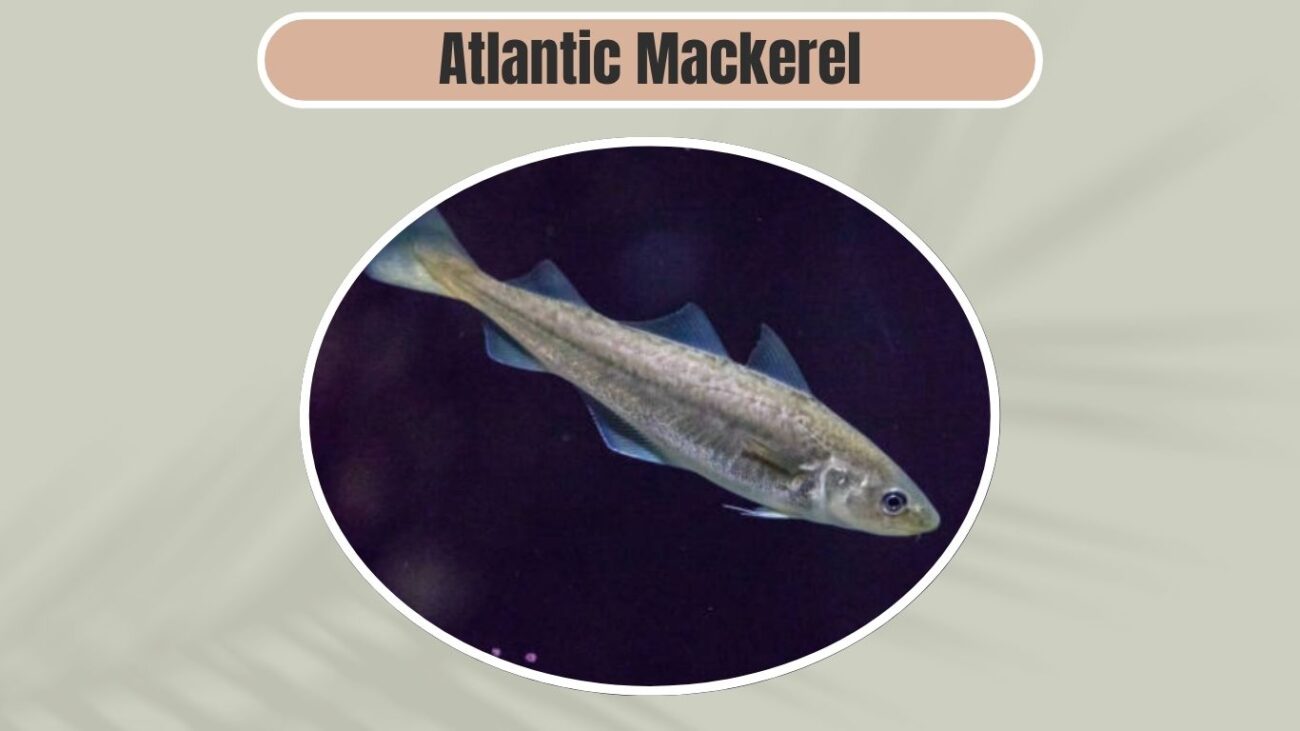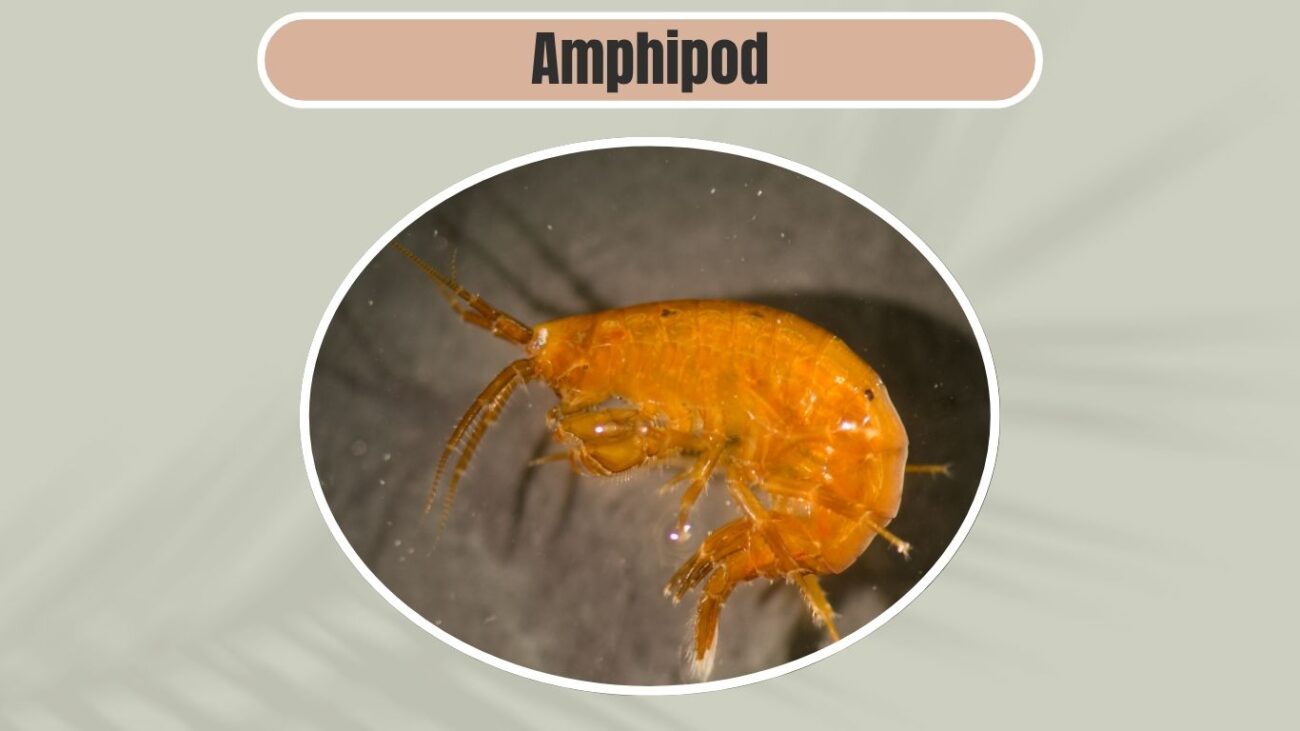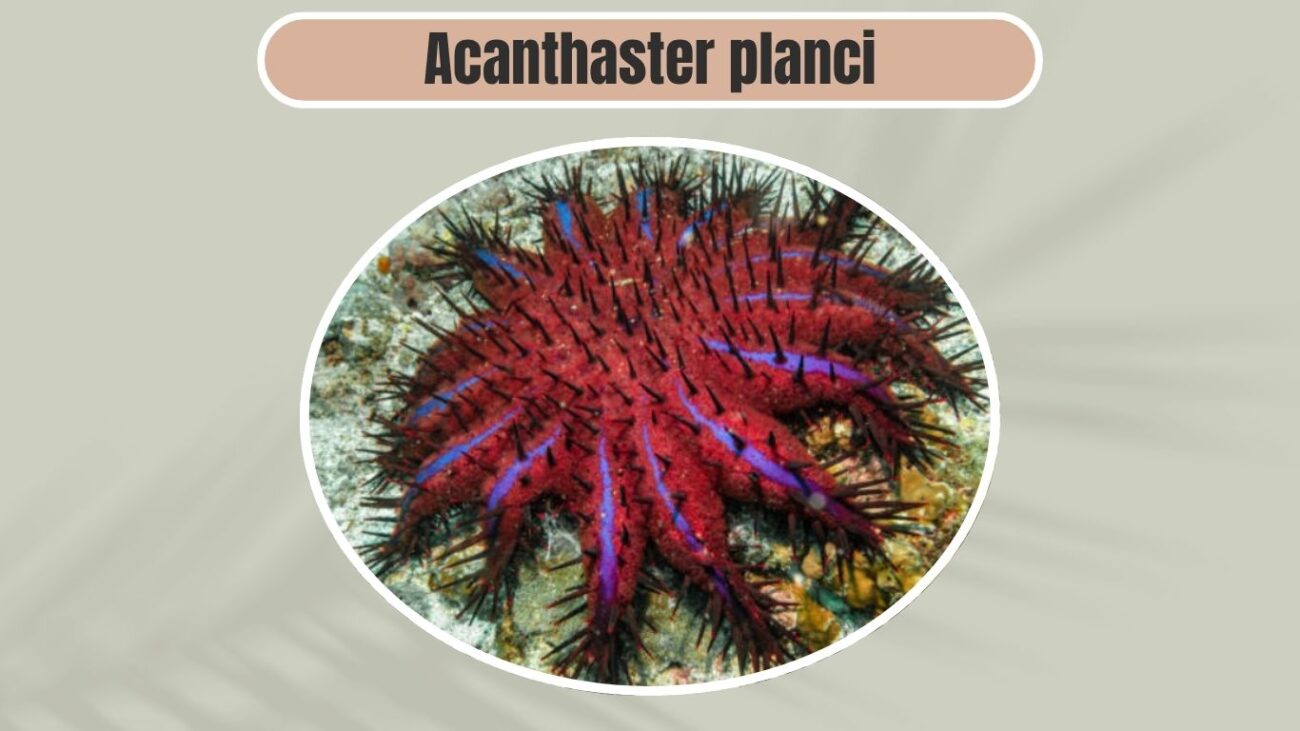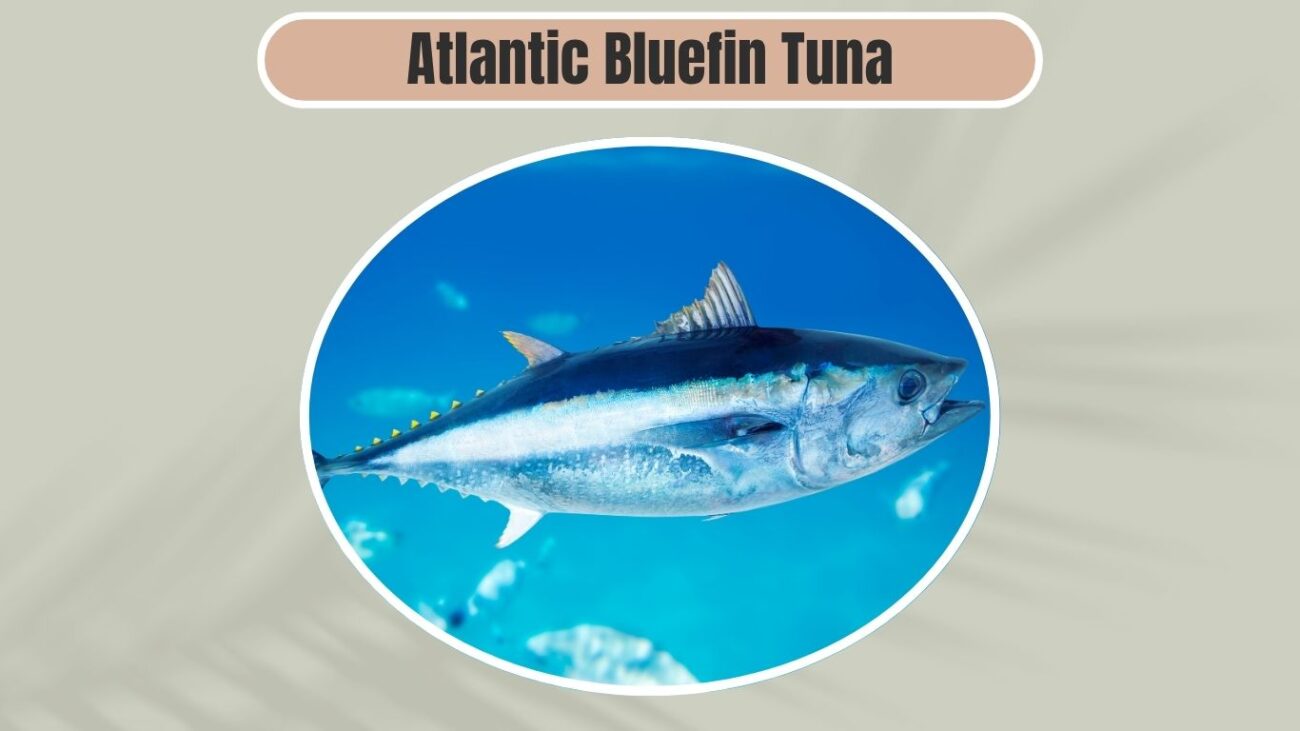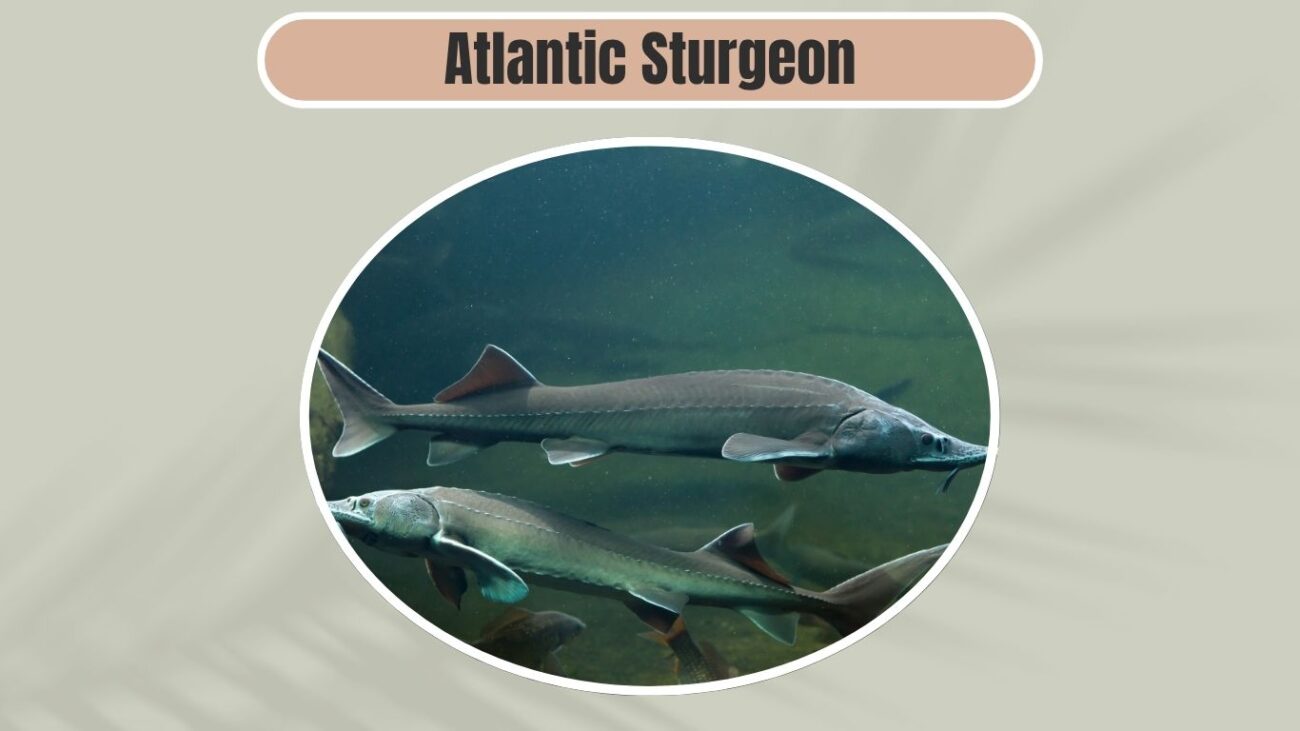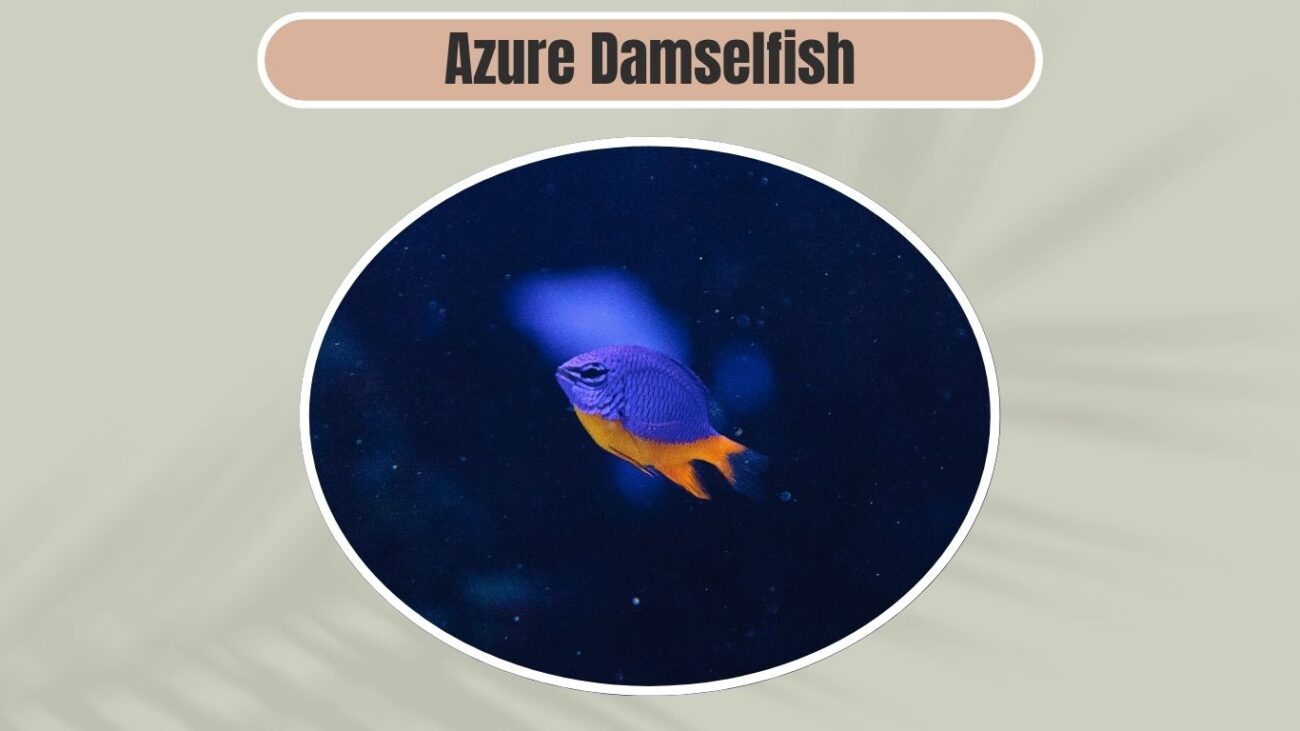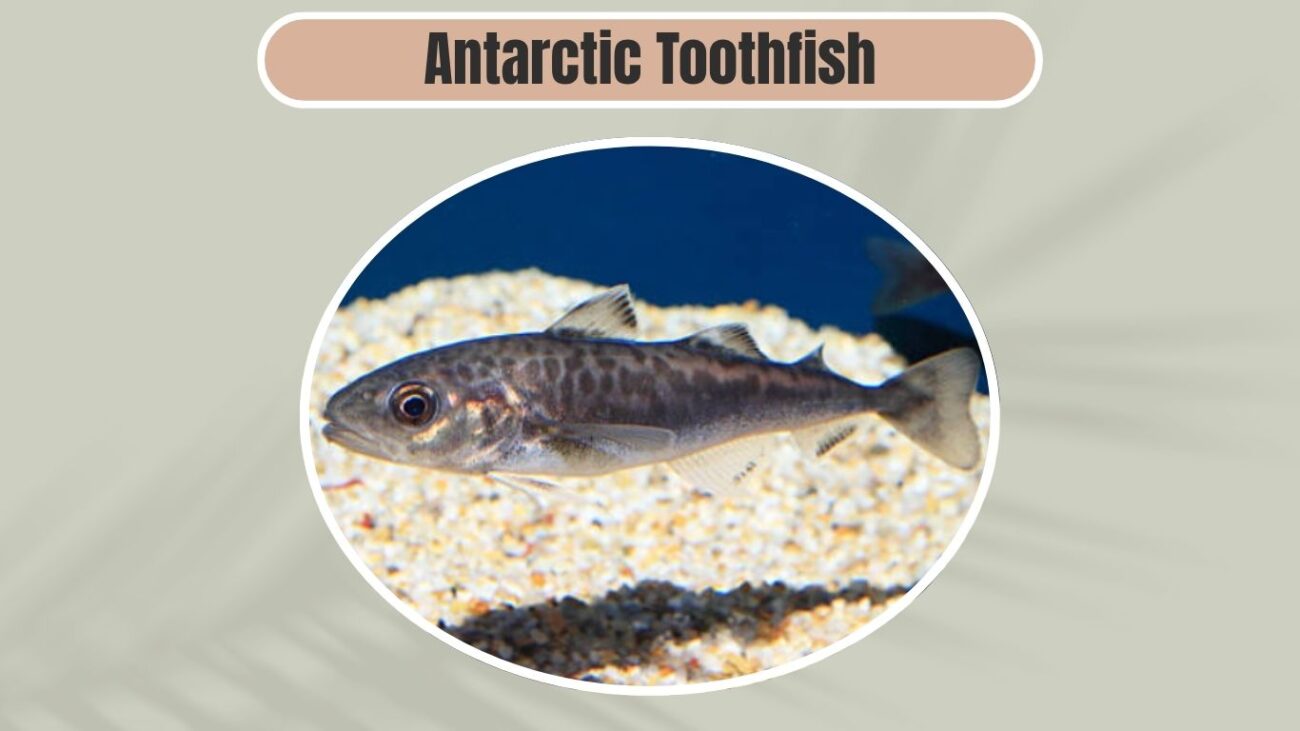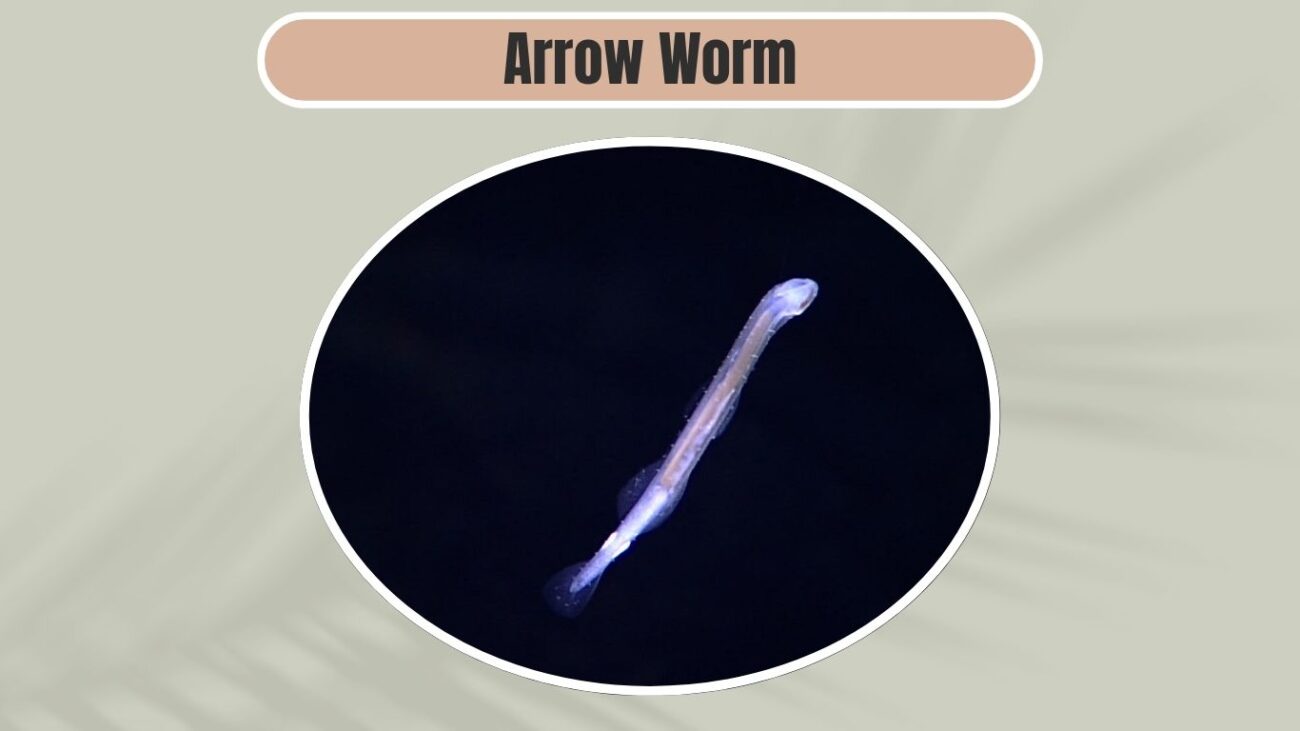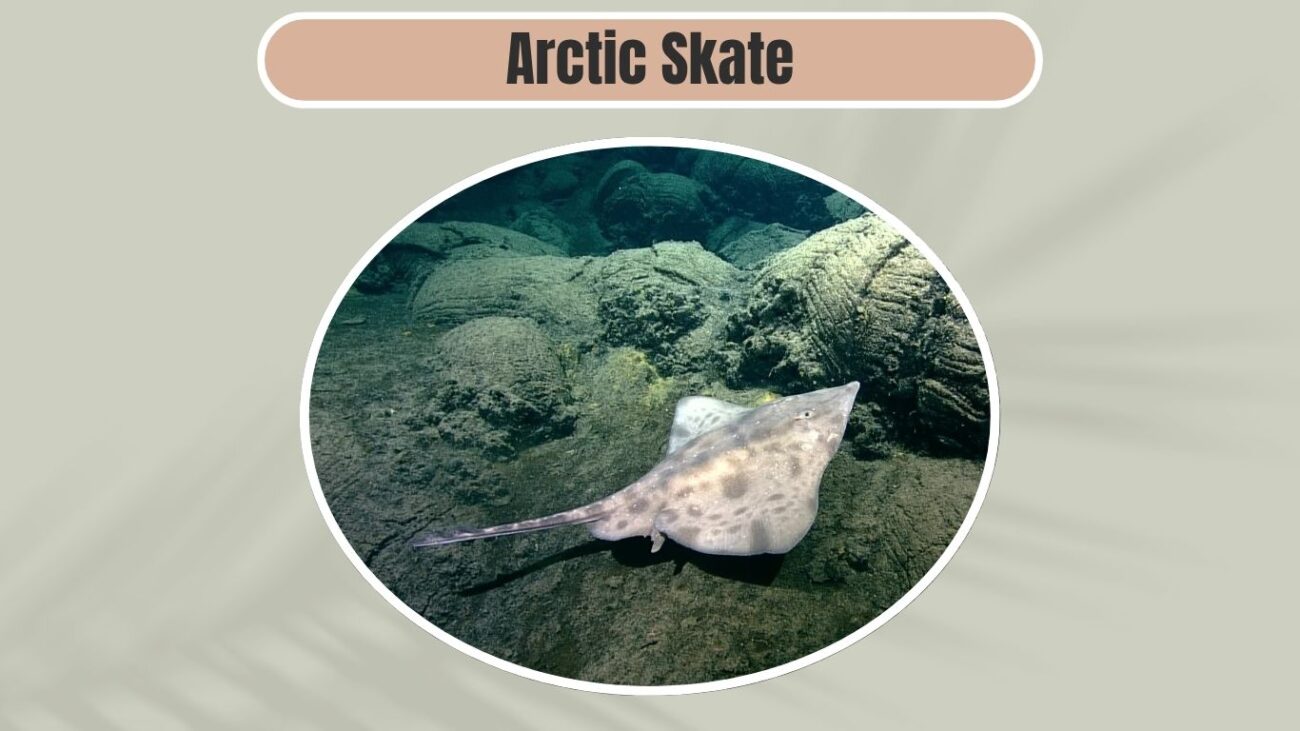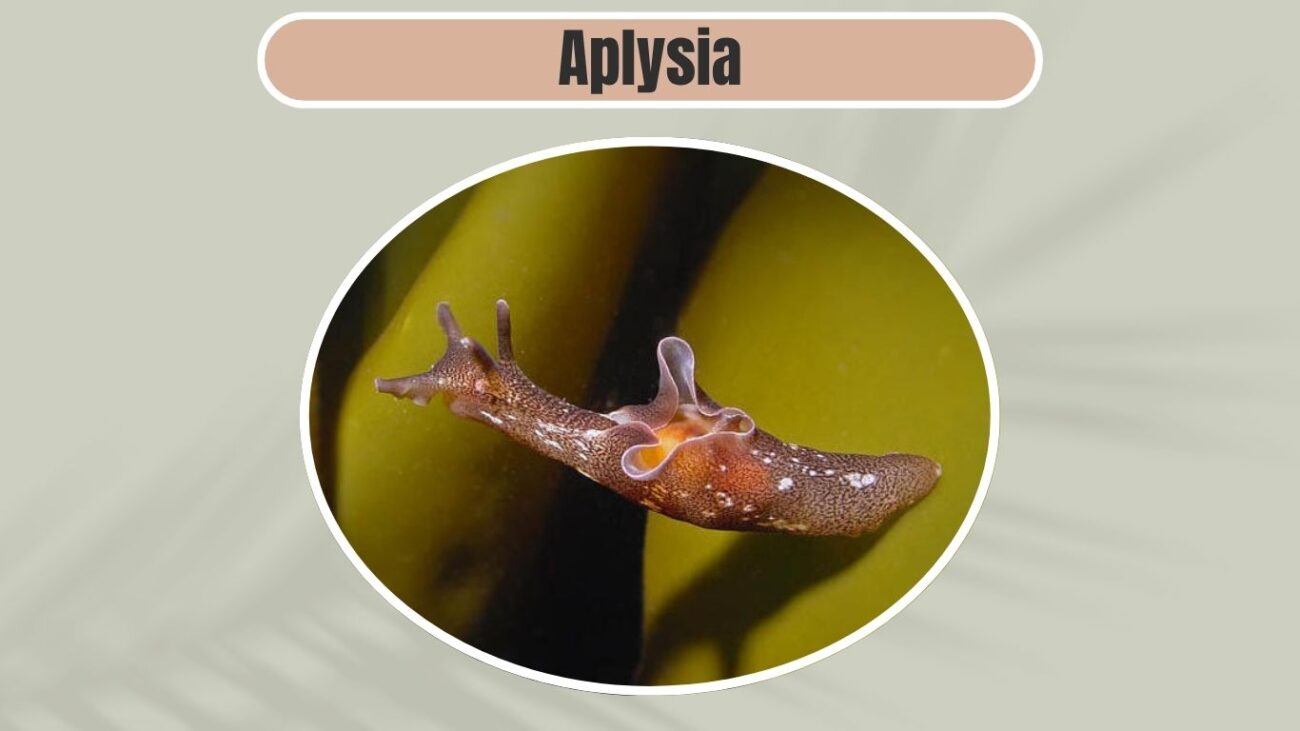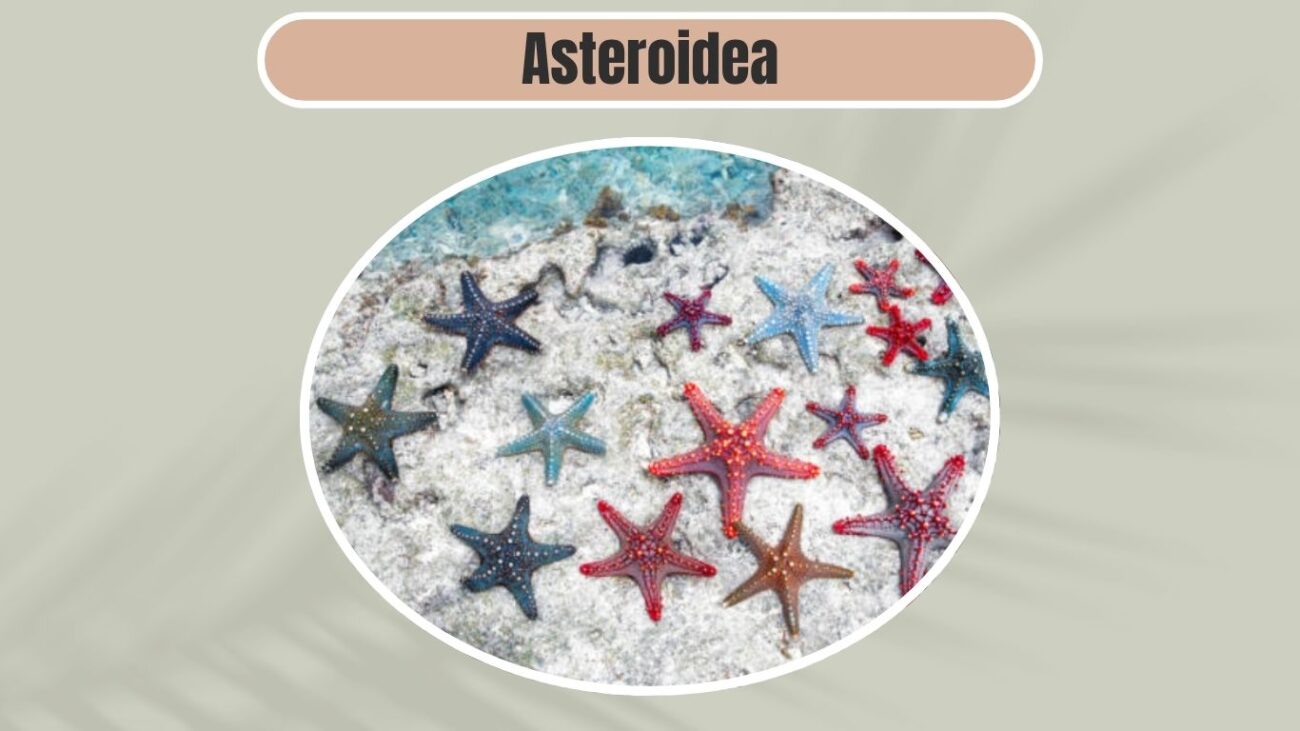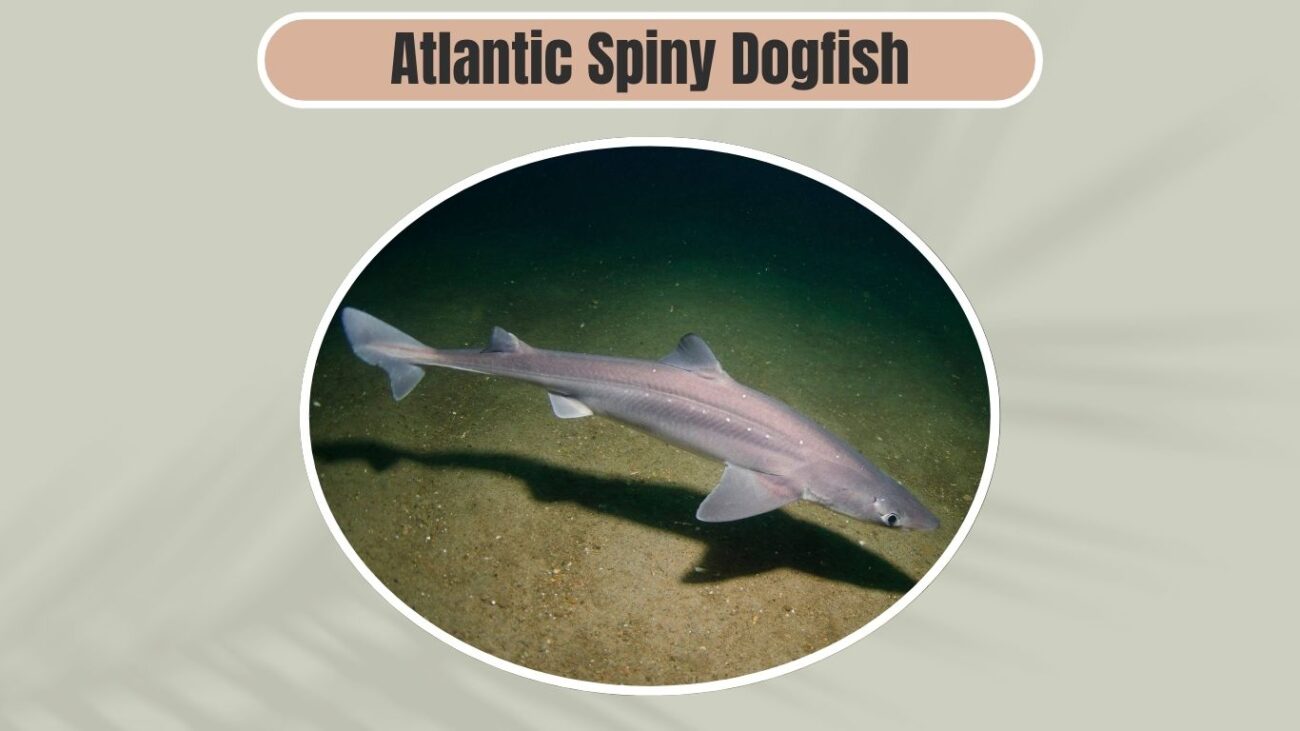The ocean is home to an incredible variety of creatures, and many of them have names beginning with the letter “A.” From deep-sea predators like the anglerfish to colorful reef dwellers like the azure damselfish, this list highlights 25 fascinating sea animals starting with A. Each species plays a unique role in the marine ecosystem, showcasing the ocean’s rich biodiversity and beauty.
1. Anglerfish
The anglerfish is a deep-sea predator known for its eerie appearance and unique hunting technique. Named for the fleshy growth on its head that acts like a fishing lure, the anglerfish dwells in the darkest parts of the ocean. These mysterious fish are rarely seen by humans and are well adapted to the extreme conditions of the deep sea.
Identification
- Large head with wide, crescent-shaped mouth
- Long, flexible spine (illicium) on the head ending in a glowing lure (esca)
- Dark, rough skin to blend in with deep ocean surroundings
- Sharp, translucent teeth
- Size ranges from 2 inches to over 3 feet, depending on the species
- Females are much larger than males
Habitat and Depth Range
Anglerfish are typically found at depths between 660 to 9,800 feet (200 to 3,000 meters). They inhabit the bathypelagic zone of oceans worldwide, particularly in the Atlantic and Antarctic Oceans.
Hunting Method
The anglerfish uses bioluminescence to attract prey in the dark. Its glowing lure mimics small organisms, drawing curious fish closer until the anglerfish snaps its powerful jaws shut.
Unique Reproductive Behavior
Some anglerfish species display sexual parasitism, where the much smaller male fuses permanently to the female’s body, sharing nutrients and reproductive cells.
2. Anchovy
Anchovies are small, schooling fish found in marine waters worldwide. These slender, silver-bodied fish play a crucial role in the ocean food chain and are also harvested for human consumption, particularly in sauces and snacks.
Identification
- Slender, elongated body with silver sides
- Large eyes and a pointed snout
- Single dorsal fin located mid-body
- Typically 2 to 6 inches in length
- Mouth extends behind the eye
Habitat and Distribution
Anchovies are commonly found in shallow coastal waters and estuaries. They thrive in both temperate and tropical oceans, often swimming in massive schools for protection.
Diet and Feeding
Anchovies feed on plankton and other microscopic organisms using filter-feeding techniques. Their diet makes them a vital link in transferring energy up the food chain.
3. Anemone
Sea anemones are colorful, flower-like marine animals related to corals and jellyfish. Though they appear plant-like, they are carnivorous animals that use stinging tentacles to capture prey.
Identification
- Soft, polyp-like body attached to a surface
- Surrounded by numerous stinging tentacles
- Come in various colors, shapes, and sizes
- Central mouth located at the top of the body
- Can grow from less than an inch to over 6 feet across
Habitat and Behavior
Anemones are usually found attached to rocks, coral reefs, or ocean floors in shallow and deep waters. Some species form mutualistic relationships with clownfish, offering shelter in exchange for cleaning and protection.
Defense and Feeding
Using nematocysts (stinging cells), anemones paralyze small fish and invertebrates that come too close. The tentacles then move the prey into the central mouth for digestion.
4. Atlantic Cod
Atlantic cod is a cold-water fish valued for its meat and oil. Once abundant in the North Atlantic, cod populations have declined due to overfishing, making it a species of concern in some regions.
Identification
- Robust, torpedo-shaped body
- Three dorsal fins and two anal fins
- Chin barbel (whisker-like projection)
- Color ranges from greenish to brown, with light spots
- Usually between 2 to 3 feet long
Habitat and Distribution
Atlantic cod inhabit cold, deep waters in the North Atlantic Ocean, including areas around Canada, the US, and Europe. They prefer seabeds with sand, gravel, or rock.
Behavior and Importance
Cod are demersal fish, meaning they live and feed near the bottom. They are important both ecologically and economically, supporting major fisheries for centuries.
5. Atlantic Salmon
Atlantic salmon is a well-known migratory fish famous for its journey from ocean waters to freshwater rivers to spawn. It’s a valuable species for commercial fishing, aquaculture, and sport fishing.
Identification
- Streamlined, silver body with darker back
- Small black spots on the gill cover and upper body
- Forked tail and adipose fin
- Grows up to 30 inches or more in length
- Juveniles (parr) have vertical markings on sides
Habitat and Life Cycle
Atlantic salmon are anadromous—they hatch in freshwater, migrate to the sea, and return to freshwater to reproduce. They are found in the North Atlantic Ocean and coastal rivers of Europe and North America.
Migration and Breeding
Salmon are known for their incredible homing instinct, swimming thousands of miles back to their birth rivers to spawn. After spawning, some survive to repeat the cycle, unlike Pacific salmon.
6. Abalone
Abalones are marine snails prized for their iridescent shells and edible flesh. These mollusks attach to rocks in coastal waters and are considered a delicacy in many cultures.
Identification
- Flat, ear-shaped shell with a row of respiratory holes
- Colorful, pearly interior (mother-of-pearl)
- Tough, muscular foot used for attachment
- Can range in size from 1 inch to over 12 inches
- Shells often encrusted with algae or barnacles
Habitat and Behavior
Abalones live in shallow coastal waters, especially on rocky substrates with strong wave action. Common in California, Australia, New Zealand, and Japan.
Feeding and Threats
They feed on algae, especially kelp. Overharvesting, poaching, and habitat loss have endangered several abalone species, leading to tight fishing regulations.
7. Archerfish
The archerfish is a fascinating tropical fish known for its unique method of hunting by shooting jets of water to knock down insects from overhanging plants.
Identification
- Flattened body with silver and black bands
- Pointed snout and upturned mouth
- Grows up to 10 inches long
- Large, forward-facing eyes for precise targeting
- Dorsal fin set far back on the body
Habitat and Range
Found in brackish coastal waters, estuaries, and mangroves across Southeast Asia and Northern Australia. Often seen near the water surface.
Hunting Technique
Archerfish are known for their remarkable accuracy, spitting water up to 2 meters away to hit prey. They adjust for refraction and compensate for distance and angle with amazing precision.
8. Atlantic Mackerel
Atlantic mackerel is a fast-swimming, schooling fish found in temperate waters. It’s known for its beautiful, striped coloration and importance in commercial fishing.
Identification
- Streamlined, torpedo-shaped body
- Iridescent blue-green back with wavy black stripes
- Silvery belly with no vertical bars
- Two dorsal fins and a deeply forked tail
- Typically 12–18 inches in length
Habitat and Distribution
Atlantic mackerel inhabit the North Atlantic Ocean, including coastal waters of Europe and North America. They migrate seasonally in large schools, often near the surface.
Feeding and Movement
They feed on plankton, small fish, and crustaceans, often while swimming in dense groups. Mackerel are constantly in motion, needing to keep water flowing over their gills.
9. Arctic Char
Arctic char is a cold-water fish found in Arctic and subarctic regions. It shares traits with both salmon and trout and is admired for its rich, pink-orange flesh.
Identification
- Streamlined body with small head and pointed snout
- Variable coloration: silvery in the ocean, bright red or orange with white edges on fins in spawning season
- Light spots across body
- Size ranges from 20 to 30 inches, depending on environment
Habitat and Range
Native to cold freshwater lakes, rivers, and Arctic coastal waters. Found in Alaska, Canada, Scandinavia, and Russia, especially in glacial areas.
Seasonal Behavior
Arctic char may migrate between freshwater and the sea or remain landlocked. Their coloration and behavior change dramatically during spawning.
10. Amphipod
Amphipods are small, shrimp-like crustaceans found in almost every aquatic environment. Despite their size, they play a critical role in marine food webs.
Identification
- Laterally compressed (sideways-flattened) body
- No carapace (shell covering)
- Multiple pairs of legs and antennae
- Usually 1 to 10 millimeters in size
- Range in color from transparent to brownish
Habitat and Diversity
Found in oceans, lakes, rivers, and even moist soil, amphipods are incredibly adaptable. In the sea, they often live among algae, sand, or detritus.
Ecological Role
Amphipods are detritivores and scavengers, helping to break down organic matter. They also serve as a key food source for fish, seabirds, and whales.
11. Acanthaster planci (Crown-of-Thorns Starfish)
The Crown-of-Thorns Starfish is a large, spiny sea star known for its bright colors and destructive appetite for coral. It’s one of the largest starfish in the ocean and poses a threat to reef ecosystems.
Identification
- Covered in long, venomous spines
- Typically 10–14 arms (more than most starfish)
- Colors range from purple and red to green and gray
- Can grow up to 3 feet in diameter
- Soft, flexible body with tube feet on the underside
Habitat and Distribution
Found mainly in Indo-Pacific coral reefs, especially around the Great Barrier Reef, Red Sea, and Indian Ocean. Prefers warm, shallow tropical waters.
Ecological Impact
Feeds almost exclusively on coral polyps, leaving white coral skeletons behind. Outbreaks can devastate entire reef systems, especially when predator populations decline or water quality worsens.
12. Australian Swellshark
The Australian Swellshark is a small, bottom-dwelling shark known for its ability to inflate its body when threatened. It’s a harmless and rarely seen species.
Identification
- Stocky body with broad head
- Brown to yellowish with darker saddle patterns
- Can swell its body by gulping water or air
- Grows up to about 3 feet in length
- Has small, blunt teeth and cat-like eyes
Habitat and Range
Native to southern Australian waters, including Victoria, Tasmania, and South Australia. Typically found on rocky reefs and sandy bottoms at depths up to 300 feet.
Behavior and Defense
When threatened, it wedges itself into crevices and inflates to appear larger. Nocturnal and slow-moving, feeding on small fish and crustaceans.
13. Australian Giant Cuttlefish
The Australian Giant Cuttlefish is the largest species of cuttlefish in the world and is famous for its spectacular color-changing abilities and seasonal mass gatherings.
Identification
- Broad, oval-shaped body with short arms and two tentacles
- Wavy fin runs along the sides of the body
- Capable of rapid color change for camouflage and communication
- Can grow up to 3 feet long and weigh over 20 pounds
- Possesses an internal cuttlebone for buoyancy control
Habitat and Mating Grounds
Primarily found in southern Australian coastal waters, particularly Spencer Gulf in South Australia, where they gather in huge numbers to breed.
Intelligence and Behavior
Extremely intelligent for an invertebrate, using complex communication, camouflage, and problem-solving. Mating season is marked by dramatic displays of color and pattern.
14. Atlantic Bluefin Tuna
The Atlantic Bluefin Tuna is one of the largest and fastest fish in the ocean. Highly prized in commercial fishing, especially for sushi, it’s known for its incredible strength and long migrations.
Identification
- Large, torpedo-shaped body
- Metallic blue back and silvery white underside
- Small finlets between dorsal and tail fins
- Can grow over 10 feet long and weigh up to 1,500 pounds
- Warm-blooded, helping it swim fast in cold waters
Habitat and Migration
Found in the North Atlantic Ocean and Mediterranean Sea, bluefin tuna migrate thousands of miles between feeding and spawning grounds. They prefer deep, open ocean waters.
Speed and Fishing
Known to reach speeds up to 40 mph, they hunt schooling fish like sardines and mackerel. Due to overfishing, international regulations are in place to protect the species.
15. American Lobster
The American Lobster, also known as the Maine lobster, is a large crustacean famous for its delicious meat and strong claws. It’s a major part of the U.S. seafood industry.
Identification
- Hard exoskeleton (molts as it grows)
- One large crushing claw and one pinching claw
- Dark greenish-brown in the wild, turns red when cooked
- Can grow up to 25 inches and weigh over 40 pounds
- Long antennae and small black eyes
Habitat and Range
Found along the Northwest Atlantic coast, from Canada to North Carolina, especially in cold, shallow coastal waters with rocky or muddy bottoms.
Behavior and Lifecycle
Lobsters are nocturnal scavengers, feeding on dead fish, mollusks, and other marine life. They can live for 50 years or more and are solitary by nature.
16. Atlantic Sturgeon
The Atlantic Sturgeon is a prehistoric, bottom-dwelling fish that has existed for over 100 million years. It’s recognizable by its armored body and long snout.
Identification
- Long, spindle-shaped body with five rows of bony plates (scutes)
- Pointed snout with barbels underneath
- No teeth; uses suction to feed
- Typically 6–9 feet in length, can weigh over 800 pounds
- Grayish-brown coloration with pale belly
Habitat and Range
Native to the eastern coast of North America, from Canada to Florida, including rivers and estuaries. They are anadromous, migrating from saltwater to freshwater to spawn.
Conservation Status
Once abundant, Atlantic sturgeon populations declined sharply due to overfishing and habitat destruction. Now listed as threatened or endangered in many regions, with strict protections in place.
17. Azure Damselfish
The Azure Damselfish is a small, brightly colored reef fish known for its electric blue body and feisty temperament. Common in saltwater aquariums, it’s also widespread in tropical oceans.
Identification
- Vibrant blue body with possible yellowish tail or belly
- Small, oval-shaped body with a forked tail
- Typically 2 to 3 inches in length
- Large eyes and continuous dorsal fin
- Males often brighter than females
Habitat and Distribution
Native to the Indo-Pacific region, especially around coral reefs, lagoons, and rocky outcrops. Often seen darting among corals and sea anemones in shallow waters.
Behavior and Diet
Territorial and aggressive toward other small fish. Feeds on plankton, algae, and small invertebrates. Known for bold behavior despite their small size.
18. Antarctic Toothfish
The Antarctic Toothfish is a large, deep-sea predator found in frigid Southern Ocean waters. It plays a key ecological role and is closely monitored due to its commercial value.
Identification
- Long, heavy-bodied fish with a blunt head
- Pale gray to brown body with lighter underbelly
- Large mouth with visible sharp teeth
- Can grow over 6 feet long and weigh up to 300 pounds
- Thick, oily flesh helps survive cold waters
Habitat and Range
Inhabits deep, icy waters of the Southern Ocean, especially near Antarctica. Found at depths ranging from 300 to over 3,000 feet.
Importance and Conservation
Targeted by fisheries as a substitute for Chilean sea bass. Slow to mature and reproduce, making them vulnerable to overfishing and requiring strict international regulation.
19. Arrow Worm
Arrow worms, or chaetognaths, are transparent, torpedo-shaped predators found in oceans worldwide. Though tiny, they are ferocious plankton hunters.
Identification
- Transparent, elongated body with fins along sides
- Pair of grasping spines near the head
- Typically 2 to 120 millimeters long
- Tail fin helps in dart-like movement
- Body often appears bristle-free, though named for bristle-jaws
Habitat and Behavior
Common in both open oceans and coastal zones, especially in plankton-rich waters. Some species prefer deep-sea habitats, while others stay near the surface.
Feeding and Movement
They prey on copepods, larvae, and other plankton, ambushing with lightning speed. Arrow worms are hermaphroditic and reproduce quickly, making them a key part of marine food webs.
20. Arctic Skate
The Arctic Skate is a bottom-dwelling cartilaginous fish found in frigid northern waters. It glides across the seafloor using its wing-like pectoral fins and is adapted to life in extreme cold.
Identification
- Flattened, diamond-shaped body with a long, slender tail
- Gray to brown coloration with dark spots
- Smooth skin with small spines along the back and tail
- Typically 2 to 5 feet in length
- Eyes located on top, mouth underneath
Habitat and Range
Found in the Arctic Ocean and northern parts of the North Atlantic, typically at depths ranging from 500 to 4,000 feet. Prefers cold, muddy seafloors.
Behavior and Diet
Feeds on small fish, crustaceans, and invertebrates. Uses electrosensory organs to detect prey in the dark, icy deep sea. Little is known about its reproduction due to its remote habitat.
21. Atlantic Wolffish
The Atlantic Wolffish is a bottom-dwelling predator known for its strong jaws and fierce-looking teeth. Despite its fearsome appearance, it’s not dangerous to humans.
Identification
- Elongated, eel-like body with large head and blunt snout
- Prominent, protruding canine-like teeth
- Gray to blue-gray skin, often with vertical bands
- Can grow up to 5 feet long
- Thick lips and powerful jaw muscles
Habitat and Range
Inhabits cold, rocky bottoms of the North Atlantic, especially off the coasts of Newfoundland, Iceland, and Northern Europe. Typically found at depths of 200 to 1,500 feet.
Feeding and Role
Feeds on hard-shelled prey like sea urchins, crabs, and mollusks. Plays an important role in controlling invertebrate populations. Listed as a species of concern due to declining numbers.
22. Aplysia (Sea Hare)
Aplysia, commonly called the Sea Hare, is a large marine gastropod mollusk that resembles a cross between a snail and a slug. It’s known for releasing purple ink when threatened.
Identification
- Soft, elongated body with wing-like flaps (parapodia)
- Two long, ear-like rhinophores on the head
- Range in color from brown to reddish-purple
- Can grow up to 16 inches long
- Lacks a prominent external shell (some have a small internal shell)
Habitat and Behavior
Found in shallow coastal waters, especially in seagrass beds and algae-covered rocks across temperate and tropical regions. Often spotted near California, the Mediterranean, and Australia.
Defense and Diet
Feeds on algae and seaweed, using a radula to scrape plant matter. When threatened, sea hares release ink clouds to confuse predators and escape.
23. Asteroidea (Starfish Class)
Asteroidea is the scientific class that includes all true starfish (also called sea stars). These echinoderms are found in oceans worldwide and are known for their radial symmetry and remarkable regeneration abilities.
Identification
- Usually have five arms, though some species have more
- Central disc with tube feet on the underside
- Tough, spiny skin in various colors and textures
- No head or brain; decentralized nerve system
- Sizes range from ½ inch to over 3 feet in diameter
Habitat and Range
Found from tide pools to deep-sea trenches, starfish inhabit every ocean on Earth. They often cling to rocks, coral, or seabeds.
Feeding and Regeneration
Feed on mollusks and coral, sometimes everting their stomachs to digest prey outside the body. Many species can regrow lost arms, and some can regenerate an entirely new body from a single limb.
24. Agnatha (Jawless Fish)
Agnatha is a superclass of primitive, jawless fish that includes species like lampreys and hagfish. These ancient creatures represent some of the earliest forms of vertebrate life.
Identification
- Elongated, eel-like body
- No jaws; have circular, sucker-like mouths
- Lacks scales and paired fins
- Skeleton made of cartilage
- Typically ranges from 6 inches to 3 feet long
Habitat and Diversity
Found in both marine and freshwater environments. Lampreys inhabit coastal rivers and lakes, while hagfish are mostly deep-sea bottom dwellers.
Behavior and Feeding
Lampreys are often parasitic, attaching to fish and feeding on blood. Hagfish feed on dead or decaying animals, producing slime as a defense mechanism. They play a vital role in ocean cleanup.
25. Atlantic Spiny Dogfish
The Atlantic Spiny Dogfish is a small shark species known for its sharp spines and schooling behavior. It’s found along continental shelves and has been heavily fished for food and research.
Identification
- Slender body with a pointed snout
- Two dorsal fins, each with a sharp spine
- Gray to brown upper body with a pale belly
- Grows up to 3 to 4 feet in length
- Lacks an anal fin (a distinguishing feature)
Habitat and Range
Inhabits temperate and subarctic coastal waters of the North Atlantic Ocean, especially along the U.S., Canadian, and European coasts. Found from surface to 3,000 feet deep.
Behavior and Diet
Forms large migratory schools, especially females. Feeds on fish, squid, and crustaceans. Though small, its spines offer protection from predators. Dogfish are known for long gestation periods—up to 2 years.

